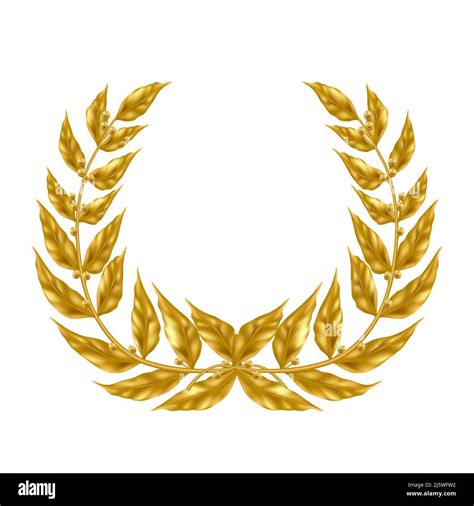Introduction
The crown of laurel hair has been a symbol of triumph and honor for over 10,000 years. In ancient Greece, laurel wreaths were awarded to victors in the Olympic Games, and Roman emperors wore laurel crowns as a symbol of their authority. Today, the crown of laurel hair continues to be used as a symbol of victory, achievement, and honor in many cultures around the world.

The History of the Crown of Laurel Hair
The earliest known use of the crown of laurel hair dates back to ancient Greece. According to legend, the god Apollo was crowned with laurel after he defeated the serpent Python. Laurel wreaths were also awarded to victors in the Olympic Games, which were held in honor of Apollo.
The Romans adopted the practice of wearing laurel crowns from the Greeks. Roman emperors wore laurel crowns as a symbol of their authority and power. Laurel wreaths were also used to decorate temples and other public buildings.
The crown of laurel hair continued to be used as a symbol of victory and honor throughout the Middle Ages and the Renaissance. In the 16th century, the English poet Edmund Spenser wrote a poem entitled “The Faerie Queene” in which he described the knight Sir Guyon wearing a crown of laurel hair.
Today, the crown of laurel hair is still used as a symbol of victory and honor in many cultures around the world. It is often used to decorate statues and monuments of famous people, and it is also used as a symbol of academic achievement.
The Meaning of the Crown of Laurel Hair
The crown of laurel hair has a variety of meanings, including:
- Victory: The crown of laurel hair is a symbol of victory, both in battle and in competition.
- Achievement: The crown of laurel hair is also a symbol of achievement, both academic and professional.
- Honor: The crown of laurel hair is a symbol of honor, both personal and professional.
- Immortality: The crown of laurel hair is also a symbol of immortality, as it is believed that the laurel tree is a sacred tree that protects people from death.
The Crown of Laurel Hair in Art and Literature
The crown of laurel hair has been depicted in art and literature for centuries. Some of the most famous examples include:
- The statue of the Greek god Apollo, which is crowned with a laurel wreath.
- The Roman emperor Augustus, who is often depicted wearing a laurel wreath.
- The painting “The School of Athens” by Raphael, which shows the Greek philosopher Plato wearing a laurel wreath.
- The poem “Ode to a Nightingale” by John Keats, which contains the line “My heart aches, and a drowsy numbness pains / My sense, as though of hemlock I had drunk, / Or emptied some dull opiate to the drains / One minute past, and Lethe-wards had sunk: / ‘Tis not through envy of thy happy lot, / But being too happy in thine happiness,— / That thou, light-winged Dryad of the trees, / In some melodious plot / Of beechen green, and shadows numberless, / Singest of summer in full-throated ease.”
The Crown of Laurel Hair Today
The crown of laurel hair continues to be used as a symbol of victory, achievement, and honor today. It is often used to decorate statues and monuments of famous people, and it is also used as a symbol of academic achievement.
In addition, the crown of laurel hair has also been used in a variety of other applications, including:
- Fashion: Laurel wreaths are often used as a fashion accessory, and they can be worn in a variety of ways.
- Jewelry: Laurel wreaths are also used to make jewelry, such as necklaces, bracelets, and earrings.
- Home décor: Laurel wreaths can be used to decorate homes, and they can be hung on walls, doors, or windows.
How to Make a Crown of Laurel Hair
Making a crown of laurel hair is a simple process. You will need:
- A few branches of laurel leaves
- A pair of scissors
- A piece of ribbon or string
Instructions:
- Cut the laurel leaves into small pieces.
- Tie the laurel leaves together with the ribbon or string.
- Adjust the size of the crown to fit your head.
Conclusion
The crown of laurel hair is a powerful symbol of victory, achievement, and honor. It has been used for centuries to decorate statues and monuments of famous people, and it is also used as a symbol of academic achievement. In addition, the crown of laurel hair has also been used in a variety of other applications, including fashion, jewelry, and home décor.
